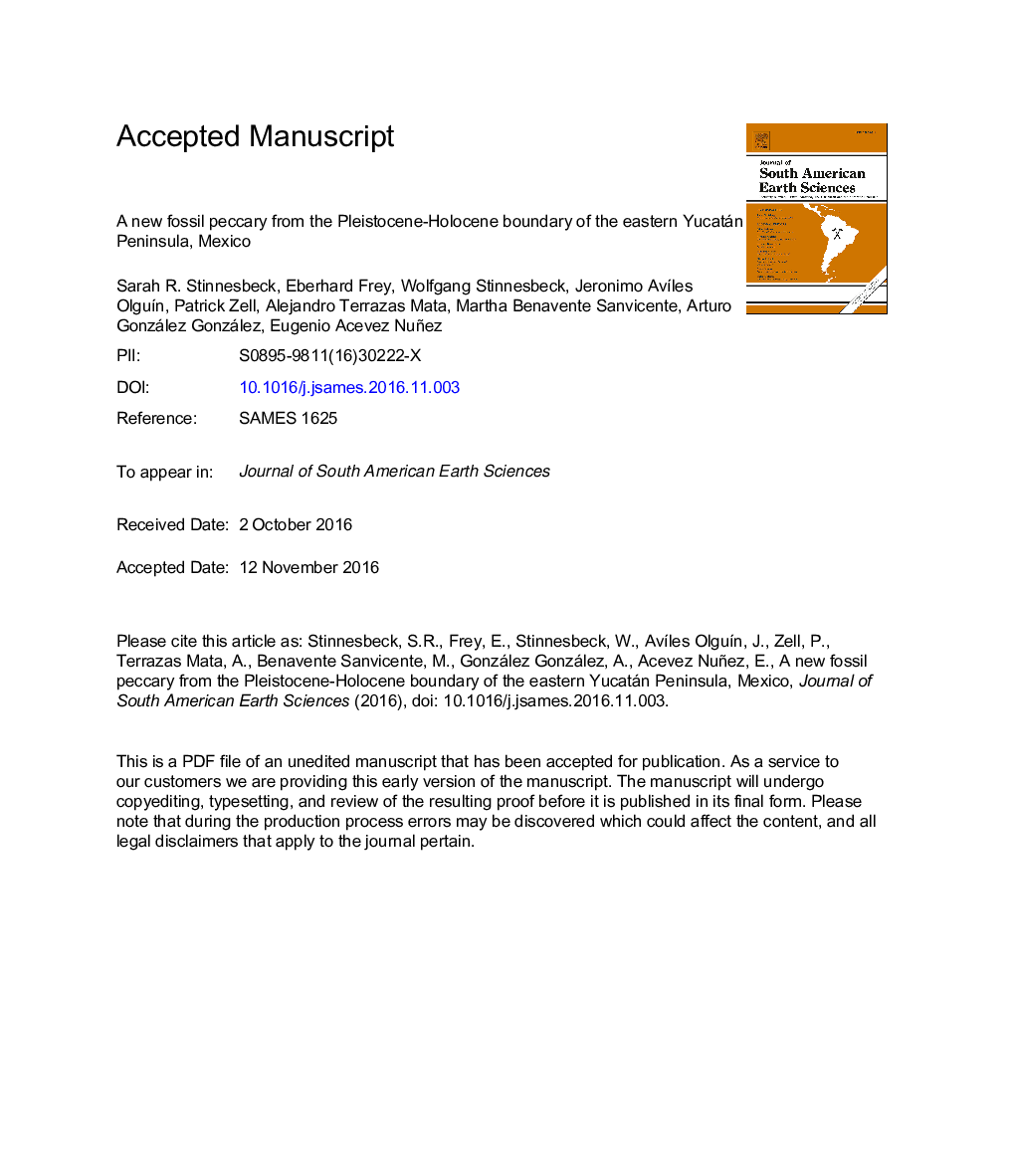| Article ID | Journal | Published Year | Pages | File Type |
|---|---|---|---|---|
| 5780381 | Journal of South American Earth Sciences | 2017 | 24 Pages |
Abstract
Here we describe the left mandibular ramus of a fossil peccary from the submerged karst cave system in the southeastern Mexican state of Quintana Roo. The specimen, which was discovered in the Muknal cave northwest of Tulúm, is a new genus and species of peccary termed Muknalia minima. The taxon likely dates from the latest Pleistocene and differs significantly from all extant peccaries and their Pleistocene relatives by a concave notch at the caudal edge of the mandibular ramus and prominent ventrally directed angular process. These diagnostic osteological differences suggest that the masticatory apparatus differed from all other peccaries, which may hint to an ecological isolation on the late Pleistocene Yucatán Peninsula.
Related Topics
Physical Sciences and Engineering
Earth and Planetary Sciences
Earth and Planetary Sciences (General)
Authors
Sarah R. Stinnesbeck, Eberhard Frey, Wolfgang Stinnesbeck, Jeronimo AvÃles OlguÃn, Patrick Zell, Alejandro Terrazas Mata, Martha Benavente Sanvicente, Arturo González González, Carmen Rojas Sandoval, Eugenio Acevez Nuñez,
